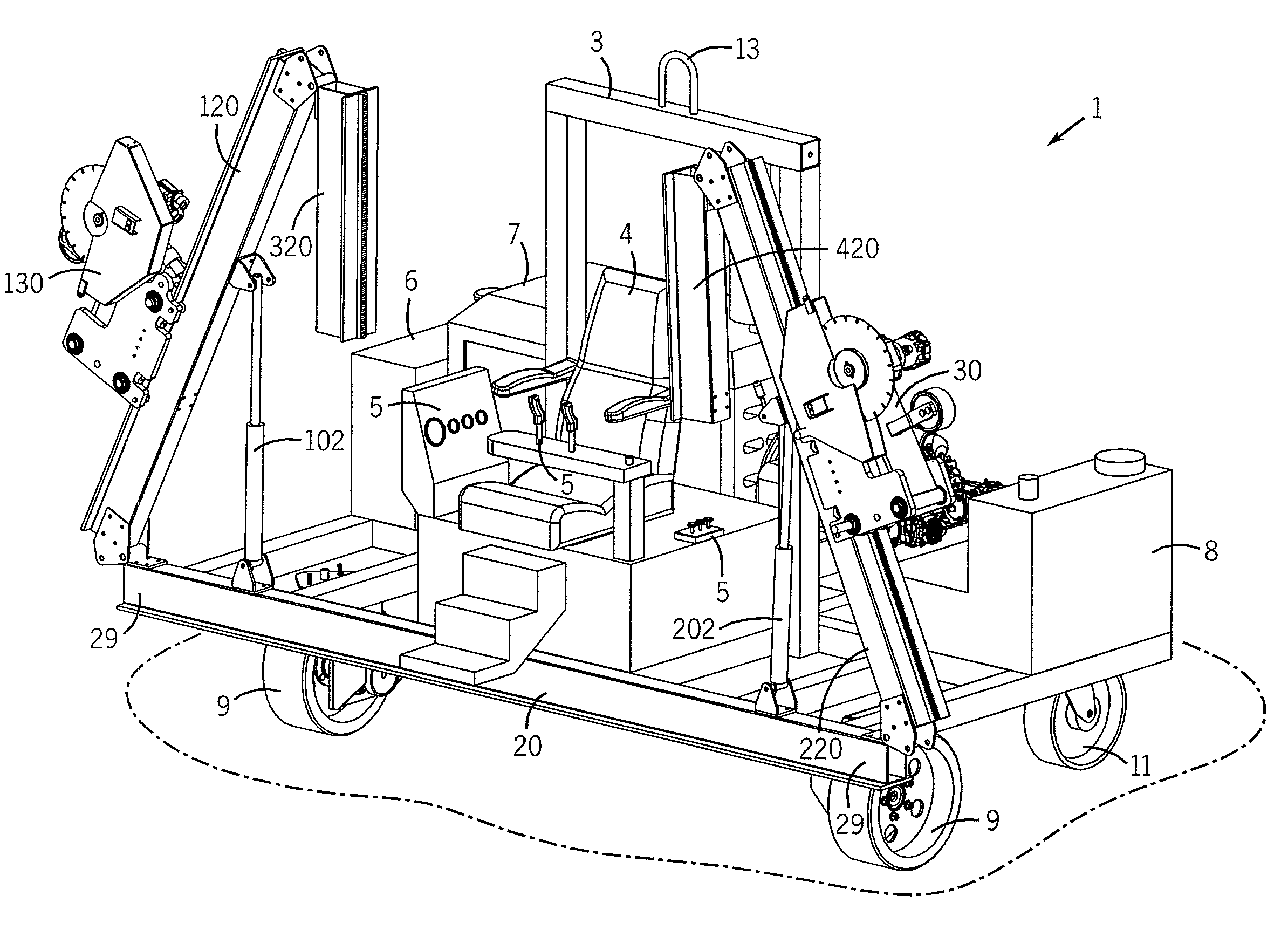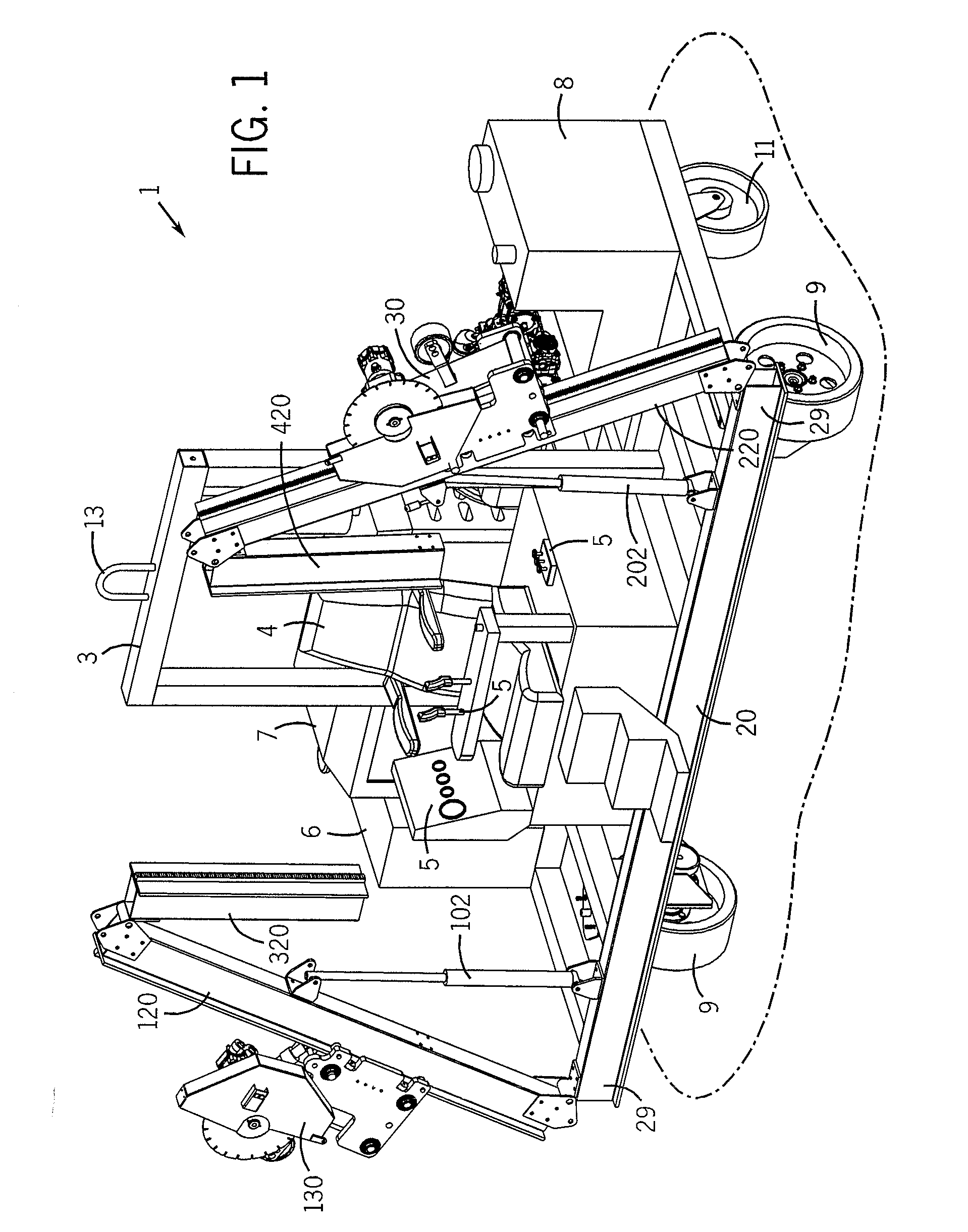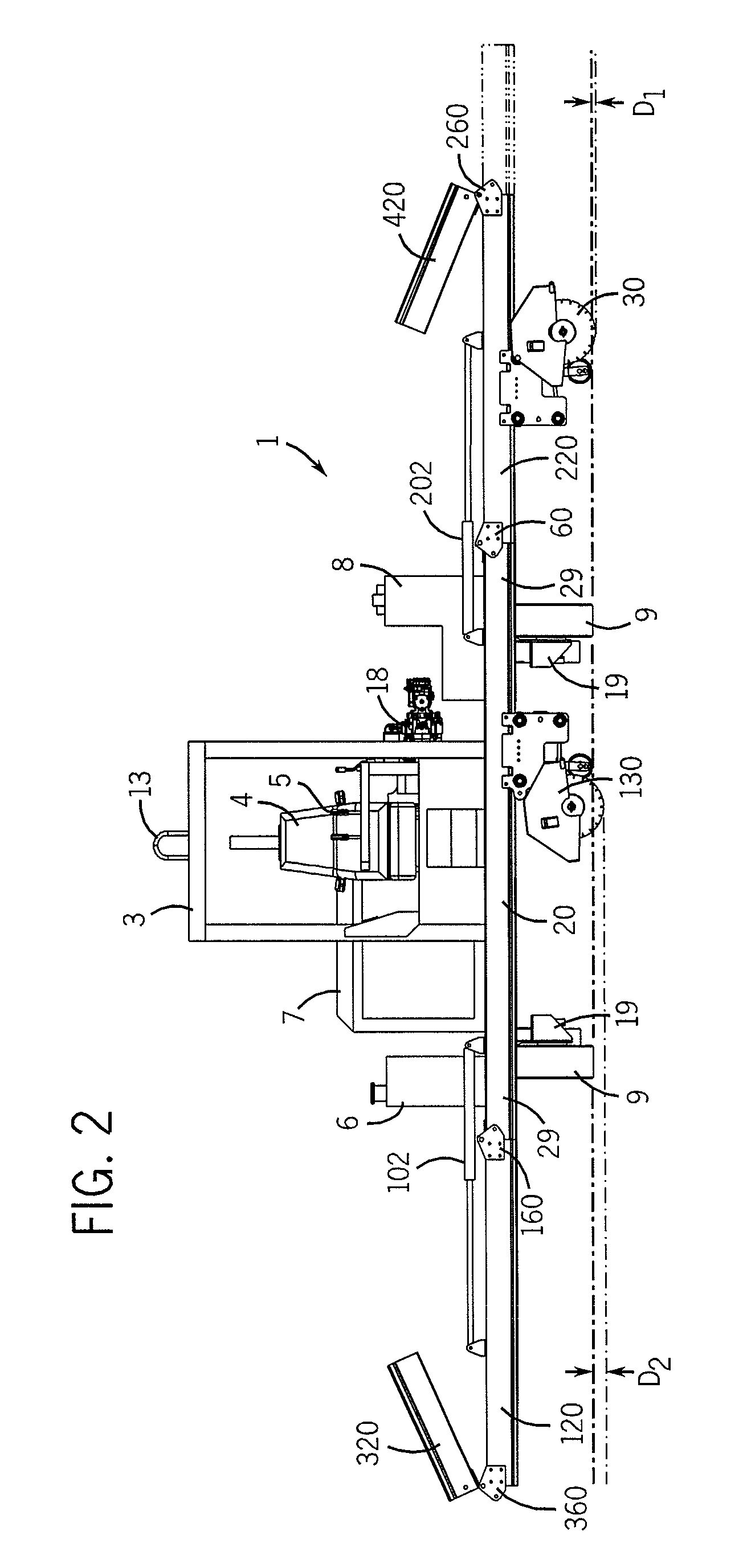Concrete cutter
a concrete cutter and cutting technology, applied in the field of sawing equipment and to sawing equipment, can solve the problems of increasing the risk of boom sections being lost or misplaced, long trailers being required to accommodate, and mixing of boom sections, so as to reduce stress, facilitate and reliably position, the effect of extending the cutting width of the concrete cutter
- Summary
- Abstract
- Description
- Claims
- Application Information
AI Technical Summary
Benefits of technology
Problems solved by technology
Method used
Image
Examples
Embodiment Construction
[0022]Referring now to the drawings in detail, wherein like numerals represent like structure and elements throughout, FIG. 1 illustrates a preferred embodiment of the improved concrete cutter of the present invention, generally identified 1. As shown, the improved concrete cutter 1 comprises a generally horizontally-disposed chassis 2, a forward-most portion of the chassis 2 being comprised of a primary boom 20. Extending upwardly from the chassis 2 is an upright frame support member 3, this upright member 3 including a lifting hook 13 that is provided for purposes of hoisting the concrete cutter 1 when such is desired or required, such as when loading the cutter 1 upon a trailer bed for transport.
[0023]Situated forwardly of the upright support member 3 is a seat 4 that is intended to be used by the operator of the cutter 1. Forwardly and to either side of the seat 4 are user controls 5 of conventional manufacture. The controls 5 may include, among other things, wheel drive levers,...
PUM
| Property | Measurement | Unit |
|---|---|---|
| diameter | aaaaa | aaaaa |
| angle | aaaaa | aaaaa |
| depth of cut | aaaaa | aaaaa |
Abstract
Description
Claims
Application Information
 Login to View More
Login to View More - R&D
- Intellectual Property
- Life Sciences
- Materials
- Tech Scout
- Unparalleled Data Quality
- Higher Quality Content
- 60% Fewer Hallucinations
Browse by: Latest US Patents, China's latest patents, Technical Efficacy Thesaurus, Application Domain, Technology Topic, Popular Technical Reports.
© 2025 PatSnap. All rights reserved.Legal|Privacy policy|Modern Slavery Act Transparency Statement|Sitemap|About US| Contact US: help@patsnap.com



